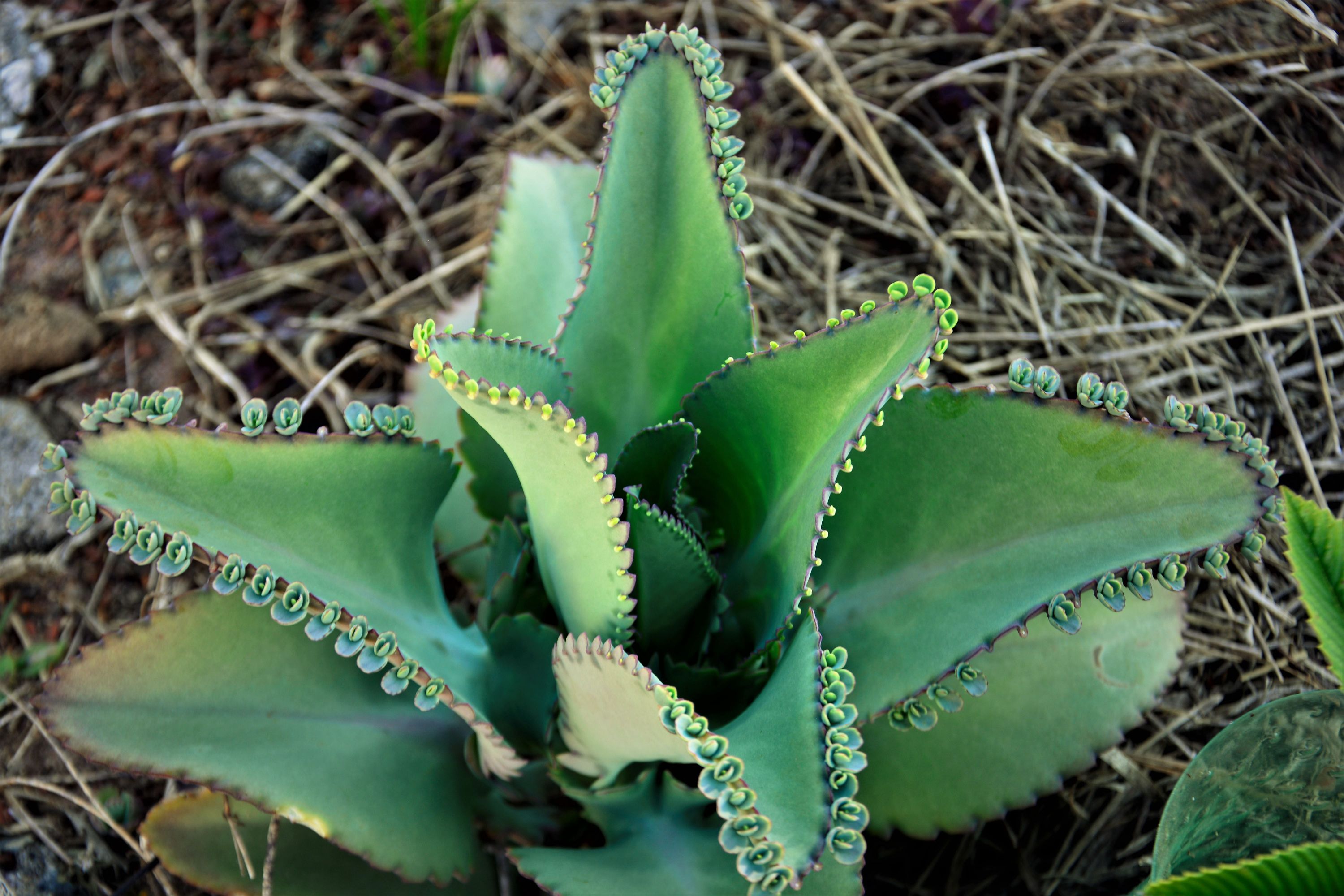Bryophyllum laetivirens
(Kalanchoe laetivirens)

Description
Kalanchoe laetivirens is a species of Kalanchoe (section Bryophyllum). It is most likely a hybrid between K. daigremontiana and K. laxiflora (syn. Bryophyllum crenatum), and therefore a group of invalid names for such a hybrid, including Kalanchoe crenodaigremontiana, Kalanchoe crenato-daigremontiana, Bryophyllum crenodaigremontianum and Bryophyllum crenato-daigremontianum, are just synonyms of K. laetivirens. It is often misidentified as one of its parents, K. daigremontiana, which has bands or spots on the back of leaves, while the leaves of K. laetivirens are completely green, as indicated by its epithet laetivirens which means "lushly green". Kalanchoe is a genus of about 125 species of tropical, succulent plants in the stonecrop family Crassulaceae, mainly native to Madagascar and tropical Africa. A Kalanchoe species was one of the first plants to be sent into space, sent on a resupply to the Soviet Salyut 1 space station in 1979. Kalanchoes require direct sunlight although they can survive with bright indirect sunlight. They only need to be watered when the soil is completely dry. Most are shrubs or perennial herbaceous plants, but a few are annual or biennial. The largest, Kalanchoe beharensis from Madagascar, can reach 6 m (20 ft) tall, but most species are less than 1 m (3 ft) tall. Kalanchoes open their flowers by growing new cells on the inner surface of the petals to force them outwards, and on the outside of the petals to close them. Kalanchoe flowers are divided into 4 sections with 8 stamens. The petals are fused into a tube, in a similar way to some related genera such as Cotyledon. The genus Kalanchoe was first described by the French botanist Michel Adanson in 1763. The genus Bryophyllum was described by Salisbury in 1806 and the genus Kitchingia was created by Baker in 1881. Kitchingia is now regarded as a synonym for Kalanchoe, while Bryophyllum has also been treated as a separate genus, since species of Bryophyllum appear to be nested within Kalanchoe on molecular phylogenetic analysis, Bryophyllum is considered as a section of the former, dividing the genus into three sections, Kitchingia, Bryophyllum, and Eukalanchoe. these were formalised as subgenera by Smith and Figueiredo (2018). The genus is predominantly native to the Old World. Only one species originates from the Americas. 56 are from southern and eastern Africa and 60 species on the island of Madagascar. It is also found in south-eastern Asia and China.
Taxonomic tree:







